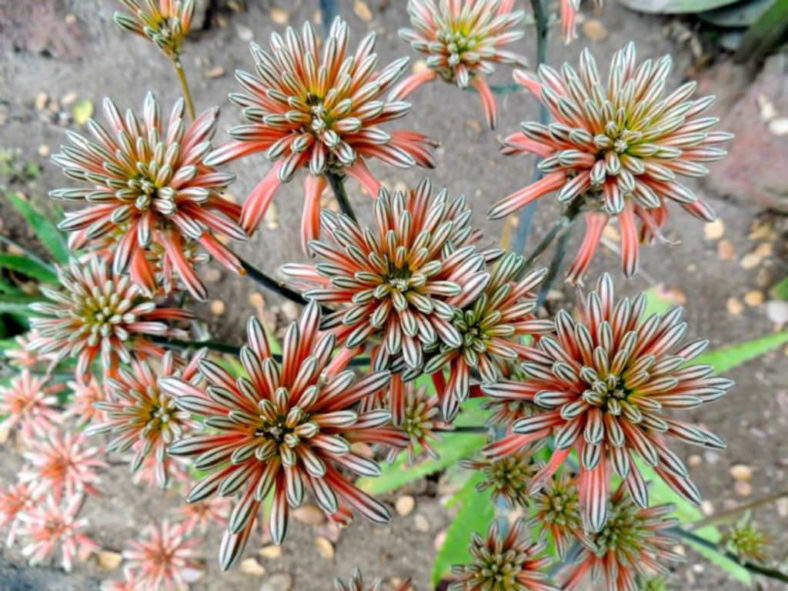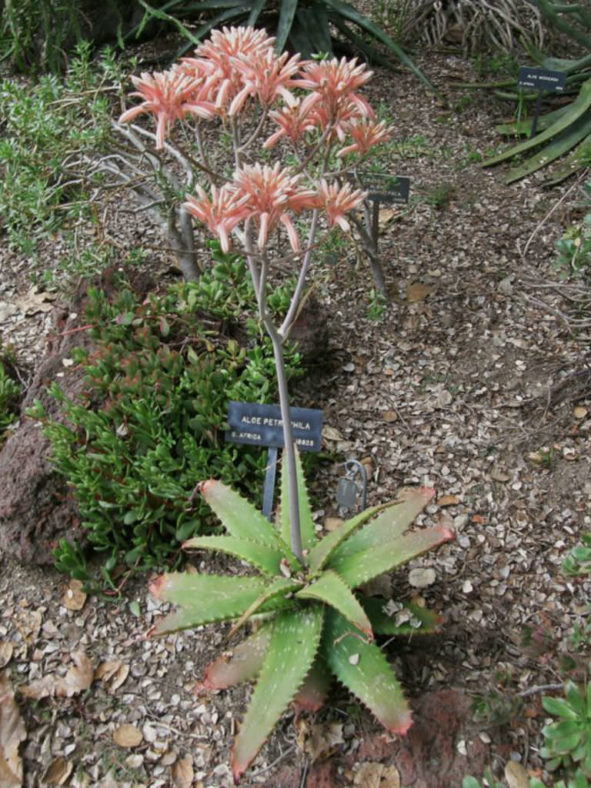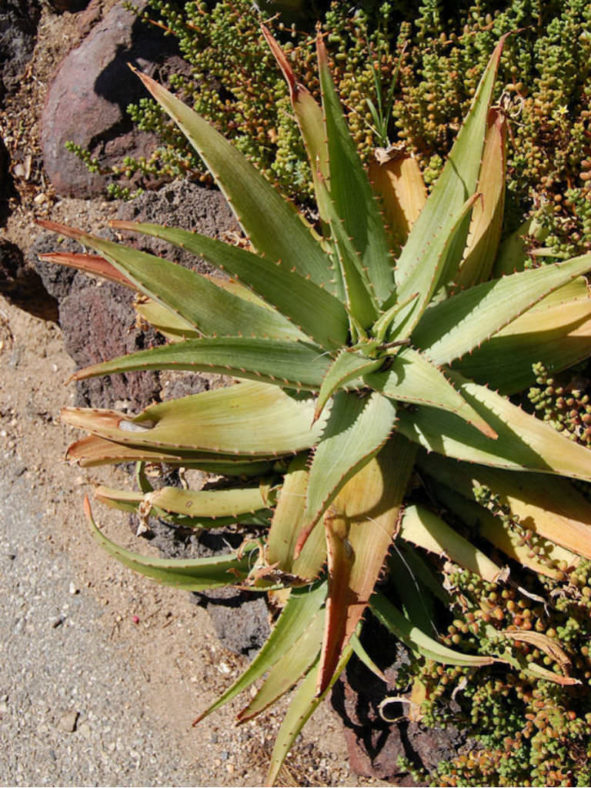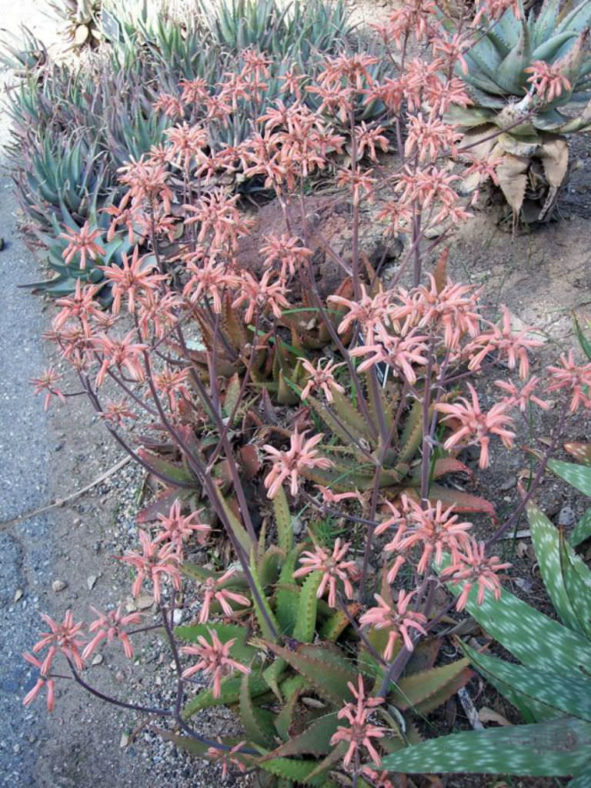Scientific Name
Aloe petrophila Pillans
Scientific Classification
Family: Asphodelaceae
Subfamily: Asphodeloideae
Genus: Aloe
Etymology
The specific epithet "petrophila (pet-roh-FY-la)" means "stone-loving" and refers to the rocky habitat in which this species grows.
Origin
Aloe petrophila is native to South Africa. It occurs in Limpopo Province in scanty soil, mainly in rock crevices or shallow soil pockets.
Description
Aloe petrophila is a stemless succulent that forms dense rosettes of bright green leaves with linear greenish-white lines and scattered elongated white spots. It grows solitary or with few offsets that appear around the base, forming small groups. The leaves are thick, fleshy, triangular, slightly recurved towards the apex, and have dark brown teeth along the margins. They can reach up to 10 inches (25 cm) in length and up to 2.4 inches (6 cm) in width.
The flowers are one of the most beautiful of all Aloes. They are coral-pink, white striped, and appear in late fall and winter crowded into densely capitate inflorescences that can grow up to 20 inches (50 cm) tall.
Aloe petrophila is a part of the Saponariae series, together with Aloe davyana, Aloe greatheadii, Aloe maculata, and Aloe umfoloziensis.

How to Grow and Care for Aloe petrophila
Light: When growing Aloes indoors, place your plants in a southern or southwest-facing window with plenty of bright, indirect light. Outdoors provide light shade, especially during the hottest parts of the day.
Soil: Plant Aloes in well-drained soil specially formulated for cacti and other succulents, or make your soil mix. Drainage is essential because too much moisture around roots can cause root rot.
Hardiness: Aloe petrophila can withstand temperatures as low as 25 to 50 °F (-3.9 to 10 °C), USDA hardiness zones 9b to 11b.
Watering: These succulents need regular watering but are very tolerant of drought conditions for short periods. Water deeply, but only when the soil is dry. Cut back on watering during the winter months.
Fertilizing: Aloes generally do not require fertilizer but may benefit from the extra nutrients.
Repotting: These plants are not particularly fast-growing and will only rarely need repotting. Repot them in the spring in a container a few inches larger in diameter every few years to keep them from becoming rootbound.
Propagation: Propagating Aloe can be done using the offsets, cuttings, or seeds from a mature plant.
Learn more at How to Grow and Care for Aloe.
Toxicity of Aloe petrophila
Aloe perfoliata is not listed as toxic for people and pets.
Links
- Back to genus Aloe
- Succupedia: Browse succulents by Scientific Name, Common Name, Genus, Family, USDA Hardiness Zone, Origin, or cacti by Genus
Photo Gallery
Click on a photo to see a larger version.


